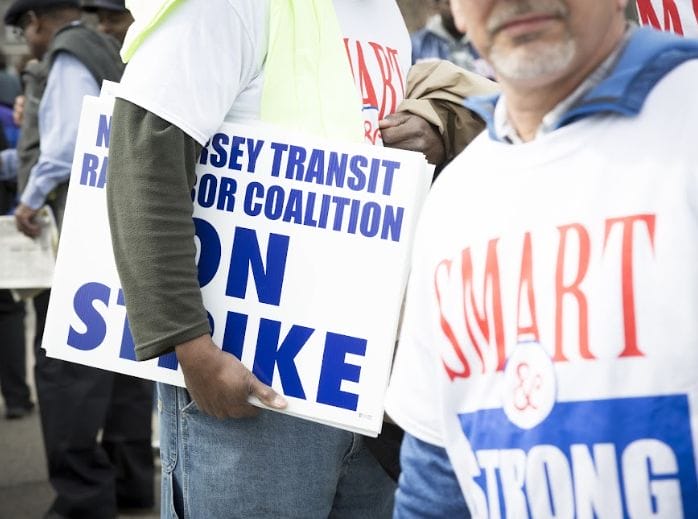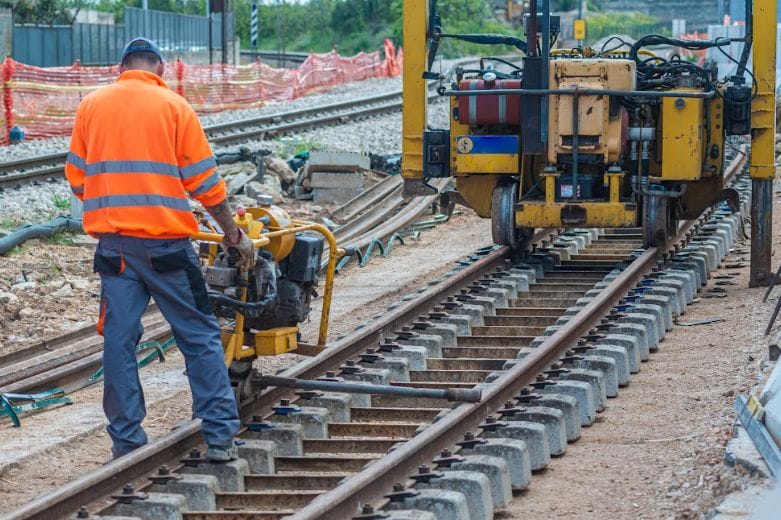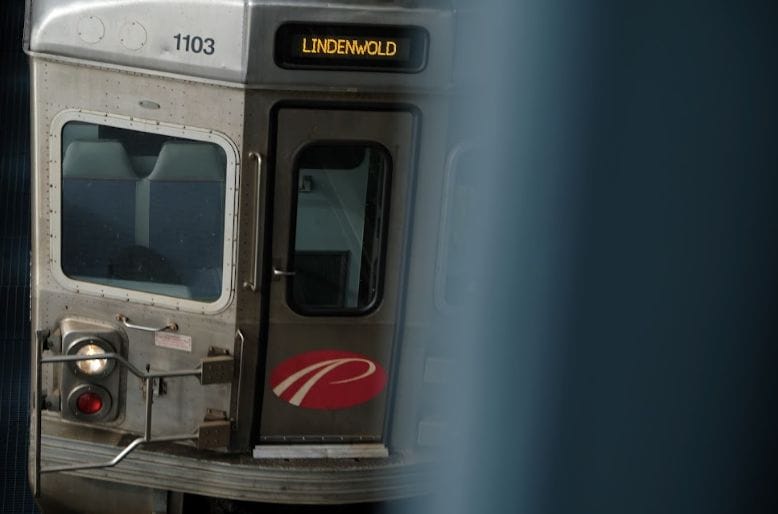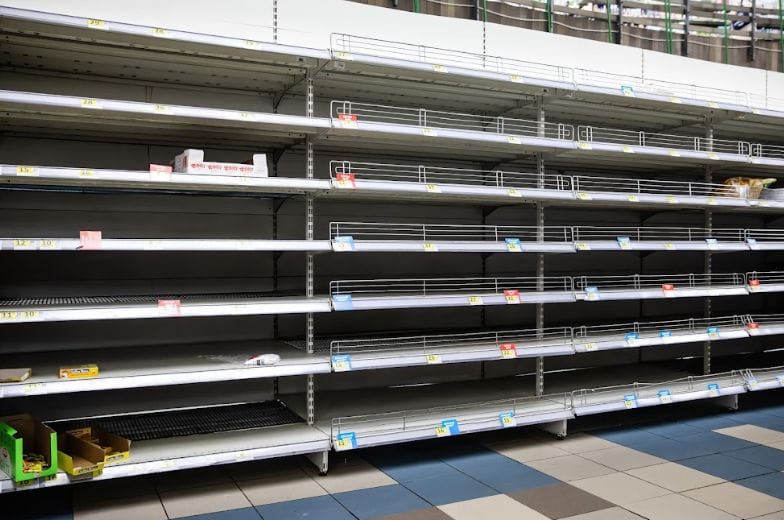 If you’ve been paying attention to the news lately, you’ve probably seen there’s the potential for a railway strike in the not so distant future. But here’s the catch, we don’t have to have a railway strike for the U.S. economy to suffer, and for food, fuel, raw materials, and other goods to stop flowing. Just a looming threat of a strike will be adverse, but an actual strike will be catastrophic. We may be barreling down the tracks right into one. In this blog, we will break down what’s going on as simply as we can. We will also look at the impacts of the threat of a strike, an actual strike, and what you should be doing today to prepare so a strike materialize. This is not a threat you want to dismiss which we’ll detail in this blog. Let’s take a look at what’s going on.
Black Friday Special
Starting today, we’ve launching our black Friday special for the Prepper’s Roadmap course. We’re offering $100 off the regular price plus you’ll get the new 2023 preparedness guide. The prepper’s roadmap course is an exhaustive course covering the foundations of prepping teaching you how to survive the first 3 months and beyond after any major disaster. We’ll post a link in the Comment section below if you’d like to check that out.
WHY IS THIS HAPPENING?
If you’ve been paying attention to the news lately, you’ve probably seen there’s the potential for a railway strike in the not so distant future. But here’s the catch, we don’t have to have a railway strike for the U.S. economy to suffer, and for food, fuel, raw materials, and other goods to stop flowing. Just a looming threat of a strike will be adverse, but an actual strike will be catastrophic. We may be barreling down the tracks right into one. In this blog, we will break down what’s going on as simply as we can. We will also look at the impacts of the threat of a strike, an actual strike, and what you should be doing today to prepare so a strike materialize. This is not a threat you want to dismiss which we’ll detail in this blog. Let’s take a look at what’s going on.
Black Friday Special
Starting today, we’ve launching our black Friday special for the Prepper’s Roadmap course. We’re offering $100 off the regular price plus you’ll get the new 2023 preparedness guide. The prepper’s roadmap course is an exhaustive course covering the foundations of prepping teaching you how to survive the first 3 months and beyond after any major disaster. We’ll post a link in the Comment section below if you’d like to check that out.
WHY IS THIS HAPPENING?
 There’s enough for a book here, but we will just give you the gist of what is happening. There are numerous reasons we find ourselves in the current standoff between railway workers and their management. Decades of cost-cutting, layoffs, automation, consolidation, and corporate greed are just a few. The bottom line is that railroad companies do not have a good historical track record with their employees. That is one of the reasons the Federal Railroad Safety Act was created to provide protections for railway workers whistle-blowing about safety and abuse issues.
In 1980 there were a little over 537 thousand railway workers. Through consolidation, automation, layoffs, and attrition, that number had shrunk to 160 thousand just before COVID struck. The snarled supply chains halted considerable traffic from overseas, and we witnessed hundreds of cargo ships lined up off American ports. Railway traffic considerably decreased as a result of this global slowdown. The railway companies dealt with the traffic slowdown by laying off and furloughing more employees. Twelve different unions now represent around 115,000 employees. That is a 79% decrease from 1980, but we don’t have to go that far back. It’s a 28% decrease from pre-pandemic levels. This has forced many workers to shoulder the burden of longer shifts and being on-call 24/7 with no scheduled time off or guaranteed pay.
Visit any job board for the railways, and you will find similar reviews that indicate the pay is good, but the schedules are horrific. One commentator indicates he was penalized after an emergency medical leave. “Last year, I had to take an emergency 30-day medical leave of absence and, on my return, was given an investigation and 20-day suspension for taking a day off prior to the unplanned medical emergency. ” And another gives us a glimpse into the schedule. “You are on call 24/7, 365 days a year. There are no paid holidays, and if you take a day off, you are penalized for it. You may sit on a train for 12-16 hours, stay away from home at a crummy hotel for 48 hours or more, then hop on a train for a 12-16 hour trip home, where you are guaranteed a whopping 10 hours off.” In most cases, the pay raise isn’t as much of an issue as work rules and work-life balance.
Needless to say, when the railways were running again, many seasoned workers that were so quickly furloughed or laid off had found other employment, leaving a shortage of employees. There are 12 unions that have to ratify the agreement struck by the Biden administration and the Railways. Their members aren’t voting to ratify it. That makes a potential strike possible, but can the government even let that happen? If the railways stop working, your grocery stores will be empty within 72 hours. It would cost the U.S. economy $2 billion per day. Oil wouldn’t make it to refineries. Food wouldn’t make it out of the field or off the ranch. There’s no way to sugarcoat this.
Reagan fired the air traffic controllers in the 80s when they were deemed too important to strike. Railway workers are even more critical. They know that, so they can leverage to strike for better conditions. At the same time, the railway companies know they will have to give concessions to their employees. They deem it better to be forced to do so than to do so voluntarily. It’s like a toddler with a pack of matches surrounded by tinder. At some point, this will ignite into a more significant crisis, and government intervention will be required. The U.S. railway system is too big to fail.
The railway workers and the companies know that their service is so critical that they can force the government to require them to make concessions, so why bother trying to find a middle ground? They can reap incentives from the government for making the concessions. Anything they don’t like, they can rail against and use later. Imagine being in a fight with your older and stronger sibling but in earshot of your parents. Will it get out of hand with mom or dad around the corner? Yet, you are emboldened to push the fight further to the brink. The same is valid here. Now labor is only part of the issue. It is the one aspect that gets the most lip service. There are other issues that we don’t want to ignore or gloss over simply. Railway companies often cite the decline of the reliance on coal as a natural resource. The cost of diesel, supply chain disruptions and volatility, uncertain trading futures, and a new method of operations adopted by railroads called Precision Scheduled Railroading (PSR) are all factors that feed into this crisis. It has been a long, long time coming.
WHAT WILL HAPPEN IF THERE IS A THREAT OF A STRIKE?
There’s enough for a book here, but we will just give you the gist of what is happening. There are numerous reasons we find ourselves in the current standoff between railway workers and their management. Decades of cost-cutting, layoffs, automation, consolidation, and corporate greed are just a few. The bottom line is that railroad companies do not have a good historical track record with their employees. That is one of the reasons the Federal Railroad Safety Act was created to provide protections for railway workers whistle-blowing about safety and abuse issues.
In 1980 there were a little over 537 thousand railway workers. Through consolidation, automation, layoffs, and attrition, that number had shrunk to 160 thousand just before COVID struck. The snarled supply chains halted considerable traffic from overseas, and we witnessed hundreds of cargo ships lined up off American ports. Railway traffic considerably decreased as a result of this global slowdown. The railway companies dealt with the traffic slowdown by laying off and furloughing more employees. Twelve different unions now represent around 115,000 employees. That is a 79% decrease from 1980, but we don’t have to go that far back. It’s a 28% decrease from pre-pandemic levels. This has forced many workers to shoulder the burden of longer shifts and being on-call 24/7 with no scheduled time off or guaranteed pay.
Visit any job board for the railways, and you will find similar reviews that indicate the pay is good, but the schedules are horrific. One commentator indicates he was penalized after an emergency medical leave. “Last year, I had to take an emergency 30-day medical leave of absence and, on my return, was given an investigation and 20-day suspension for taking a day off prior to the unplanned medical emergency. ” And another gives us a glimpse into the schedule. “You are on call 24/7, 365 days a year. There are no paid holidays, and if you take a day off, you are penalized for it. You may sit on a train for 12-16 hours, stay away from home at a crummy hotel for 48 hours or more, then hop on a train for a 12-16 hour trip home, where you are guaranteed a whopping 10 hours off.” In most cases, the pay raise isn’t as much of an issue as work rules and work-life balance.
Needless to say, when the railways were running again, many seasoned workers that were so quickly furloughed or laid off had found other employment, leaving a shortage of employees. There are 12 unions that have to ratify the agreement struck by the Biden administration and the Railways. Their members aren’t voting to ratify it. That makes a potential strike possible, but can the government even let that happen? If the railways stop working, your grocery stores will be empty within 72 hours. It would cost the U.S. economy $2 billion per day. Oil wouldn’t make it to refineries. Food wouldn’t make it out of the field or off the ranch. There’s no way to sugarcoat this.
Reagan fired the air traffic controllers in the 80s when they were deemed too important to strike. Railway workers are even more critical. They know that, so they can leverage to strike for better conditions. At the same time, the railway companies know they will have to give concessions to their employees. They deem it better to be forced to do so than to do so voluntarily. It’s like a toddler with a pack of matches surrounded by tinder. At some point, this will ignite into a more significant crisis, and government intervention will be required. The U.S. railway system is too big to fail.
The railway workers and the companies know that their service is so critical that they can force the government to require them to make concessions, so why bother trying to find a middle ground? They can reap incentives from the government for making the concessions. Anything they don’t like, they can rail against and use later. Imagine being in a fight with your older and stronger sibling but in earshot of your parents. Will it get out of hand with mom or dad around the corner? Yet, you are emboldened to push the fight further to the brink. The same is valid here. Now labor is only part of the issue. It is the one aspect that gets the most lip service. There are other issues that we don’t want to ignore or gloss over simply. Railway companies often cite the decline of the reliance on coal as a natural resource. The cost of diesel, supply chain disruptions and volatility, uncertain trading futures, and a new method of operations adopted by railroads called Precision Scheduled Railroading (PSR) are all factors that feed into this crisis. It has been a long, long time coming.
WHAT WILL HAPPEN IF THERE IS A THREAT OF A STRIKE?
 If there is even the threat of a strike, the railroad companies will proactively scale back routes and raise prices. This occurred when there was a threat of a strike earlier this year. It turns up the heat and pressure considerably. Shippers must find alternate means for transporting their product, pay higher prices, let it sit and pay demurrage, or scale back their production. This pumps the breaks on economic growth while also sending prices skyward.
As retailers and manufacturers see the threat of a strike, they rush to get orders and surplus delivered. This artificially inflates the demand side of the supply and demand equation. As consumers begin to realize that U.S. freight railroads move around 1.7 billion tons across nearly 140,000 miles of track, running through 49 states and the District of Columbia, they rush to secure resources they feel will be disrupted. This results in panic buying, further conflates the demand side of the equation, and drives up prices.
That can all happen without an actual strike occurring. Just the threat of a strike could lead to empty shelves in your area. It would assuredly lead to higher costs and add to the already double-digit inflation.
WHAT WILL HAPPEN IF THERE IS A STRIKE?
If there is even the threat of a strike, the railroad companies will proactively scale back routes and raise prices. This occurred when there was a threat of a strike earlier this year. It turns up the heat and pressure considerably. Shippers must find alternate means for transporting their product, pay higher prices, let it sit and pay demurrage, or scale back their production. This pumps the breaks on economic growth while also sending prices skyward.
As retailers and manufacturers see the threat of a strike, they rush to get orders and surplus delivered. This artificially inflates the demand side of the supply and demand equation. As consumers begin to realize that U.S. freight railroads move around 1.7 billion tons across nearly 140,000 miles of track, running through 49 states and the District of Columbia, they rush to secure resources they feel will be disrupted. This results in panic buying, further conflates the demand side of the equation, and drives up prices.
That can all happen without an actual strike occurring. Just the threat of a strike could lead to empty shelves in your area. It would assuredly lead to higher costs and add to the already double-digit inflation.
WHAT WILL HAPPEN IF THERE IS A STRIKE?
 Most people can’t wrap their brains around the amount of cargo that travels by train at some point in its journey. According to the Association of American Railroads, if railroads did not move freight in the U.S., it would take over 99 million additional trucks traveling on public roadways and four times more fuel than rail to handle the freight Americans rely on daily. Even a day without railroads operating would cost the U.S. economy $2 billion. A week would cost an estimated $14 billion. Every ten days would tick off one percent of the annual GDP. However, those are theoretical losses.
The reality for the typical American is that almost overnight, grocery stores would be depleted. Within the first week, you would see many gas stations running out of fuel. You won’t be able to find a generator or battery at any store. It really would get that bad that fast as people brace for an extended strike and the stoppage of almost everything. Containers would sit in storage at ports. Container ships would stack up off the coast. Truckers would be working even harder, and the cost of shipping via trucks would go up and up.
Beyond what you can immediately witness, major parts and raw materials are not getting delivered. Manufacturing slows to a crawl from lack of materials and an explosion of on-hand inventory brimming warehouses. Major infrastructure equipment, parts, and machinery must be delivered, so any infrastructure failure goes from hours to repair to weeks or months. Agricultural products sit in silos or the field. Chemical plants will be forced to shut down. The stakes are high, so the bargaining positions are high. If the Teamsters Union or International Longshore and Warehouse Union join sides with their railway-working brethren, it will turn from bad to horrible overnight. Neither side–employers or employees–really need to give any concessions because they know that the government can’t let it get even a week into an actual strike. This is no air traffic controller strike where you have to cancel your vacation plans. Railways are responsible for the delivery of almost every product you use daily. So, you can expect the government will intervene hard and swiftly.
The range of options at the government’s disposal is numerous, ranging from begging and pleading to executive orders to truly draconian measures. It would likely not end well for the railway companies or their workers. The only certainty here is that the railways can’t cease operation for longer than a week or so before the U.S. starts to come apart at its literal seams–the 140,000 miles of railroad track that crisscrosses the country.
HOW CAN YOU PREPARE?
Most people can’t wrap their brains around the amount of cargo that travels by train at some point in its journey. According to the Association of American Railroads, if railroads did not move freight in the U.S., it would take over 99 million additional trucks traveling on public roadways and four times more fuel than rail to handle the freight Americans rely on daily. Even a day without railroads operating would cost the U.S. economy $2 billion. A week would cost an estimated $14 billion. Every ten days would tick off one percent of the annual GDP. However, those are theoretical losses.
The reality for the typical American is that almost overnight, grocery stores would be depleted. Within the first week, you would see many gas stations running out of fuel. You won’t be able to find a generator or battery at any store. It really would get that bad that fast as people brace for an extended strike and the stoppage of almost everything. Containers would sit in storage at ports. Container ships would stack up off the coast. Truckers would be working even harder, and the cost of shipping via trucks would go up and up.
Beyond what you can immediately witness, major parts and raw materials are not getting delivered. Manufacturing slows to a crawl from lack of materials and an explosion of on-hand inventory brimming warehouses. Major infrastructure equipment, parts, and machinery must be delivered, so any infrastructure failure goes from hours to repair to weeks or months. Agricultural products sit in silos or the field. Chemical plants will be forced to shut down. The stakes are high, so the bargaining positions are high. If the Teamsters Union or International Longshore and Warehouse Union join sides with their railway-working brethren, it will turn from bad to horrible overnight. Neither side–employers or employees–really need to give any concessions because they know that the government can’t let it get even a week into an actual strike. This is no air traffic controller strike where you have to cancel your vacation plans. Railways are responsible for the delivery of almost every product you use daily. So, you can expect the government will intervene hard and swiftly.
The range of options at the government’s disposal is numerous, ranging from begging and pleading to executive orders to truly draconian measures. It would likely not end well for the railway companies or their workers. The only certainty here is that the railways can’t cease operation for longer than a week or so before the U.S. starts to come apart at its literal seams–the 140,000 miles of railroad track that crisscrosses the country.
HOW CAN YOU PREPARE?
 Unions can strike starting on Nov. 20th, and have pushed that back through a cooling down period to December 9th. Likely, though, they will telegraph their date to get union leaders and management to continue talks at the negotiating table. You can prepare yourself right now for this potential crisis. High prices are inevitable even with a looming crisis, so stocking up on your food essentials now would be prudent. When you go to the store, stock up on canned goods with a good shelf-life. Building your pantry will keep you from desperately trying to find food when your reserves run low. Consider a case of canned vegetables, a large bag of rice, and, of course, dried beans.
Check your water storage, as well. While the railways going offline doesn’t directly impact your water supply, it does affect the equipment your municipality relies upon to deliver fresh, clean drinking water to you. You are one natural disaster at this point from being entirely on your own. Now would be a good time if you have been thinking about getting your essential equipment or a generator, now would be a good time. Top off fuel tanks and take care of any car maintenance you may have been putting off.
Think of what you will need next Spring with regard to hunting, fishing, gardening, and other food-producing endeavors. Think of what projects you have planned and the materials you may need to accomplish them. If any of these will position you stronger and more self-sufficient as a prepper, you should secure those resources sooner rather than later. The lumber you purchased two years ago was half the cost of what it is today.
Look at this as the opportunity it really is. It’s yet another pressing disaster that you face that you should be aware of. If you have only begun prepping or are merely thinking about it, now is the time to get a plan and work that plan. If you have been prepping for a while, now is the time to assess everything and fill in the gaps where you find them. We can’t encourage you enough to download one or all of the free guides from City Prepping. We will link to them in the description section and comments below. We have made our guides relevant, actionable, and as comprehensive as they can be. Even if the only guide you use is the Recession Proof Guide, you will find yourself better positioned this time next year.
You have time to prepare before the media blows up with the threat of a strike and amplifies the threat to create panic in the masses. Also, and let me make this very clear, this crisis could resolve itself. Both sides could reach an agreement when they realize that the government solution will not be good for either of them. It’s a balancing act on this channel: on one hand we want you to be aware of the potential threats we face without scaring people. But what we face is a real issue you should be monitoring. Consider this like storm clouds on the horizon. We have seen them building for a long time, and they are definitely getting closer. That doesn’t mean the storm will be directly over us, but it sure should warrant some preparation on our part in case it does.
As always, stay safe out there.
Unions can strike starting on Nov. 20th, and have pushed that back through a cooling down period to December 9th. Likely, though, they will telegraph their date to get union leaders and management to continue talks at the negotiating table. You can prepare yourself right now for this potential crisis. High prices are inevitable even with a looming crisis, so stocking up on your food essentials now would be prudent. When you go to the store, stock up on canned goods with a good shelf-life. Building your pantry will keep you from desperately trying to find food when your reserves run low. Consider a case of canned vegetables, a large bag of rice, and, of course, dried beans.
Check your water storage, as well. While the railways going offline doesn’t directly impact your water supply, it does affect the equipment your municipality relies upon to deliver fresh, clean drinking water to you. You are one natural disaster at this point from being entirely on your own. Now would be a good time if you have been thinking about getting your essential equipment or a generator, now would be a good time. Top off fuel tanks and take care of any car maintenance you may have been putting off.
Think of what you will need next Spring with regard to hunting, fishing, gardening, and other food-producing endeavors. Think of what projects you have planned and the materials you may need to accomplish them. If any of these will position you stronger and more self-sufficient as a prepper, you should secure those resources sooner rather than later. The lumber you purchased two years ago was half the cost of what it is today.
Look at this as the opportunity it really is. It’s yet another pressing disaster that you face that you should be aware of. If you have only begun prepping or are merely thinking about it, now is the time to get a plan and work that plan. If you have been prepping for a while, now is the time to assess everything and fill in the gaps where you find them. We can’t encourage you enough to download one or all of the free guides from City Prepping. We will link to them in the description section and comments below. We have made our guides relevant, actionable, and as comprehensive as they can be. Even if the only guide you use is the Recession Proof Guide, you will find yourself better positioned this time next year.
You have time to prepare before the media blows up with the threat of a strike and amplifies the threat to create panic in the masses. Also, and let me make this very clear, this crisis could resolve itself. Both sides could reach an agreement when they realize that the government solution will not be good for either of them. It’s a balancing act on this channel: on one hand we want you to be aware of the potential threats we face without scaring people. But what we face is a real issue you should be monitoring. Consider this like storm clouds on the horizon. We have seen them building for a long time, and they are definitely getting closer. That doesn’t mean the storm will be directly over us, but it sure should warrant some preparation on our part in case it does.
As always, stay safe out there.

